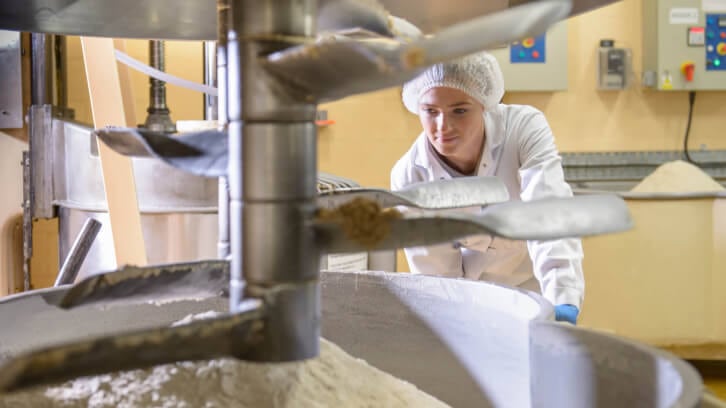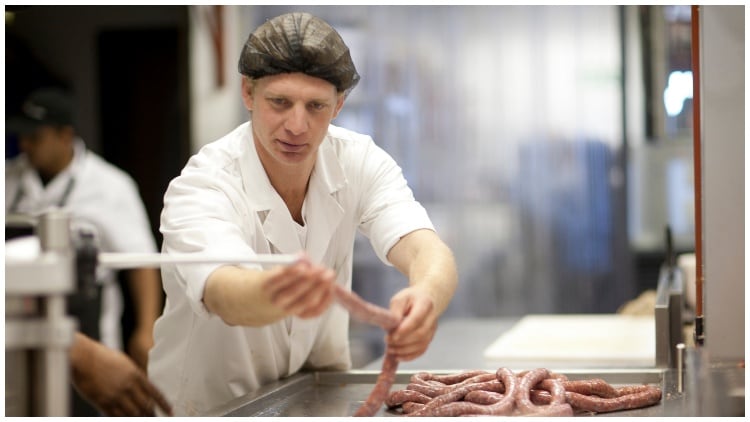We rely on countless machines that perform numerous roles within the manufacturing plant. But if those machines break down, everything stops. Time and money down the drain.
So is there a way to predict when your line may falter before it happens, or a way of extending machinery life? And, are there any trends in what causes mechanical failure…? The answer in short, is yes - and here we break it down (pun intended) for you.
What causes machine breakdowns?
There are several reasons machines can fail; from poor maintenance to incorrect operation, oxidised oil, imbalance, looseness, lubrication methods, and oil contamination.
But the common denominator appears to be education and training.
Joris Mulders’ – sales director UK, Ireland, South Africa, Australia & New Zealand at Rademaker BV – highlighted this as a major pain point for mechanical failure, which can be linked back to the ever-growing skills gap.
“It’s a lack of good, qualified technical personnel,” he said. “They know less about equipment and how to operate it because of the huge staff turnovers we’re seeing. And because of this, we’re seeing a lack of maintenance on the lines.”
Mulders believes the root cause of this can be attributed to the impact of Covid and Brexit, with both events causing skilled foreign workers to leave roles in the UK and return to their home countries.
At the same time, the sector has an ageing workforce and as veterans retire, their knowledge and experience is lost. Meanwhile the allure of working in food engineering as a young person is perhaps trumped by ‘more glamourous’ opportunities in computing or automation.
Recognising this, Rademaker has changed the way it is structured, so that it is offering not just its office staff, but also its engineers more flexibility in the hours they work.
Although Mulders acknowledged it’s difficult to know whether this is the right move for all Rademakers’ customers, he does believe that companies need to be appealing to modern needs, looking at ways it can become more attractive to Gen Z as a workplace. Flexibility is just one method.
But, however long you’ve worked at a company, Mulders considers training to be a crucial part of the ‘breakdown puzzle’. As such, Rademaker has set up an academy in which both in-house and on-site training is offered on equipment. This enables users to operate their machinery in the best possible way and understand how to troubleshoot if something does go wrong.
To extend help further, Rademaker also has a 24/7 helpdesk, wherein customers can reach out and ask questions.
Taking care of your plant machinery to prolong life
Of course, companies such as Rademaker will create their machinery with longevity in mind, but ensuring you manage and maintain your equipment properly – from lubrication to hygiene schedules – is an important endeavour.
Hygiene maintenance
At the inaugural Food Safety Innovation (FSI) conference, Katie Satterthwaite, M&S factory standards manager, stressed the importance of a well-considered hygiene process.
Hygienic design plays an important part in this, such as purchasing equipment with proofing (IP rating) and no sharp edges, but we must also consider the installation.
“How are you reaching a caged piece of equipment?” Satterthwaite pointed out as an example.
“There’s no point spending good money and installing it badly – follow hygienic installation principles,” she added. “Let’s not have engineering teams adding guards; if you’re making amends, make sure they are considered; and if you’re adding new equipment, that it ‘sings’ together.”
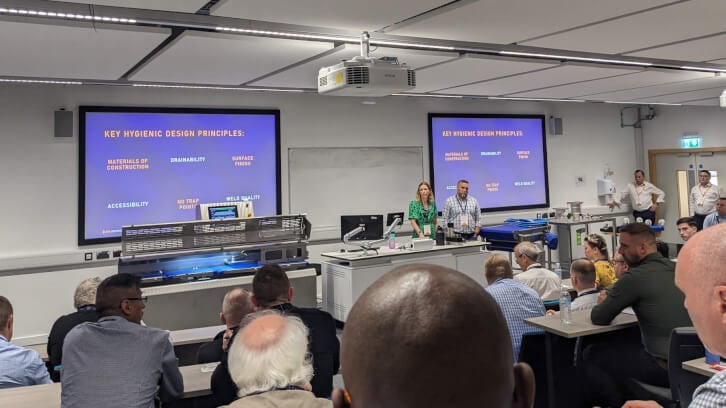
In a follow-on workshop focused on equipment design and cleaning, Phil May, Greencore’s technical support manager in hygiene, expanded on the points Satterthwaite raised, whilst adding that cleaning is often – and mistakenly – regarded as a low-skilled role and therefore an afterthought.
However, cleaning equipment is an essential step in what keeps food safe, as well as a position which requires good technical knowledge and a degree of fitness.
Looking at how one can protect their ‘hygiene window’ (i.e. when to clean), he said buy-in from senior management about the role hygiene plays is an important step, alongside building cleaning into your production plan, enforcing a consistent handover practice and cleaning as you go.
When it comes to machinery, proper cleaning routines will not only contribute to extending its lifespan, but also ensure food safety risks are limited in your factory.
Lubrication and machinery
Among the other issues noted above, lubrication issues are often the source of mechanical failure. This is because improper use can result in wear and tear of components.
“The incorrect product may have been used, there can be cross contamination by the mixing of lubricants, product loss, over or under lubrication due to user error, or even lack of lubrication altogether,” reeled off Estelle Robinson, business development manager - UK food & beverage for Klüber Lubrication GB Limited. “The latter can be a result of difficult access, busy schedules or lack of education.”
She continued: “The function of a lubricant is to reduce friction by separating the interacting surfaces, thus reducing wear and risk of failure. The viscosity of the base oil, whether using an oil or a grease, can assist in ensuring a sufficient film, supporting sealing and reducing the risk of contamination. The addition of additives to the lubricant can improve overall performance and support food safety.
“In addition to this, effective lubrication management increases component life, lowers energy consumption and ultimately reduces costs.”
Correct application will also increase operational efficiency and may even help you reach sustainability goals. As Robinson revealed, it can lead to a reduction in lubricant disposal due to longer exchange-intervals, limit electricity consumption and CO2 emissions, and lower total cost of ownership.
However, it’s important to note that lubrication is a science and although some of them may look similar in colour or consistency, they can perform differently inside an application.
“Not all lubricants are created equal,” added Robinson. “It is important to select the right lubricant for the right application.
“In the food and beverage industries, some companies may use industrial grades where there is no risk of contact with the end product, however, it is best practice to use H1 products across site to avoid the possibility of cross contamination.
“H1 lubricants manufactured in an ISO 21469 certified production plant have not only been manufactured to the highest standards specifically for the F&B industries, but with the technologically advanced lubricants now available, there should be no sacrifice in performance. Kluber Lubrication have 6 ISO 21469 accredited plants, the most demanding certification for the hygienic manufacture of H1 and HT1 products.”
When it comes to a robust lubrication management programme, Robinson believes the key lies in a lubrication survey.
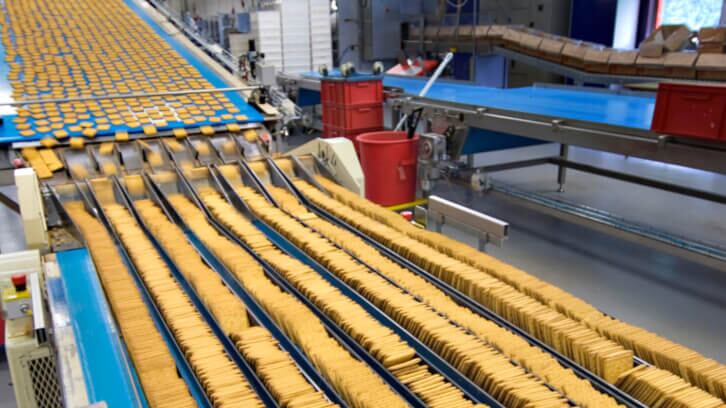
“This details lubrication products by application, product, frequency and method,” she clarified. “The front line for preventative maintenance is the user of the equipment (the operator), supported by the engineering department, but it takes time for operators to become knowledgeable in all pertinent aspects, so we can assist in developing lubrication schedules and identifying correct procedures for storage, sampling and application.
“The introduction of a colour scheme with effective labelling also helps prevent mixing food grade and non-food grade lubricants or even lubricants with different chemistries that may not be compatible.”
Robinson added that she is seeing many customers deploying total productive maintenance (TPM), with a common theme being the transfer of some of the routine lubrication practices to operators.
“One benefit is the staff working on the equipment have a closer connection to the operating conditions, recognising anything unusual, improving predictive maintenance and decreasing downtime,” she said. “Lubrication that is more involved, on critical assets, in hard to access areas or are part of scheduled maintenance can be managed by the maintenance or engineering teams. There is also the option to optimise tasks where possible to enable lubrication on the run, automate application, piping out hard to reach areas. This reduces the overall number of tasks, releasing engineers for other projects.”
Condition based maintenance
Just as we’ve seen with other areas of the food system, such as tools being introduced to help forecast supply vs demand, technology in maintenance is emerging – so called condition based maintenance.
BES Group’s business development manager, Shaun Needham, describes it as a pro-active approach in which critical equipment is monitored using technologies that analyse its state. This could through vibration or oil analysis, ultrasonic testing or thermography.
Expanding on how these technologies work, Needham offered the following example around vibrant analysis.
“[This is] the equivalent of a doctor listening to your chest with a stethoscope,” he analogised. “Vibration sensors can be placed at points on key components, such as shaft drive-ends and non-drive ends on a motor or gearbox powering an asset, to gather data. As the name suggests, they detect changes in vibration frequencies. They take measurements in three vectors - displacement, velocity and acceleration.
“In simple terms, if there is an abnormal vibration frequency, the sensor detects this. For example, if there was a crack in the outer race of a roller bearing, this would lead to periodic collisions between the bearing rollers. The sensor would detect this, as it wouldn't be audible to human hearing in the very early stages, so that appropriate maintenance could be performed to stop the issue becoming bigger and more expensive.
“Sensors can be mounted permanently on critical assets so they are monitored constantly, or readings can be taken with an accelerometer at any point and results trended with historical data.
“There are also environmental benefits to be gained. For example, vibration sensors can detect misalignment - a common fault that occurs where two connecting shafts are, as the name suggests, misaligned. If this is the case, energy consumption is increased as the motor has to work harder to create the rotation necessary to power the asset. With vibration analysis, this fault can be detected and corrected, making big savings on energy bills.”
This kind of kit, as Needham illuminated to, enables maintenance to be carried out if it needs to be based on the condition of assets, rather than a reactive approach where you wait until the assets breakdown.
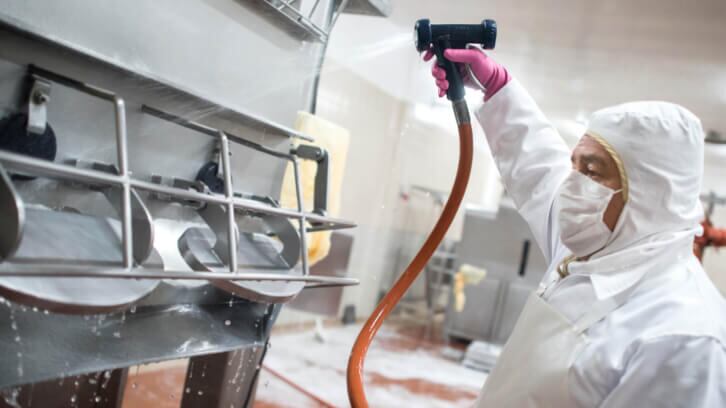
The latter approach isn’t particularly efficient and can be quite costly for a number of reasons. Needham explained further: “Some businesses schedule maintenance at set time intervals. For example, your car dealership might tell you that you need to take your car for a service every 12 months or 10,000 miles - this is a 'time-based' interval. In reality, this may be completely unnecessary, as everything could be running smoothly with no underlying issues. On the flip side, you could potentially pick up an underlying issue that needs to be addressed sooner.
“While this is better than performing reactive maintenance, maintenance based on time intervals is really not an efficient way to go either. In both cases, you are, effectively, blind to what is going on within the inner workings of your assets until they either fail or it reaches the scheduled time to investigate. With a condition-based maintenance approach, you will only perform maintenance if it is required, meaning you can be much more effective, responsive, and energy efficient.”
According to Needham, condition monitoring tech also boasts the benefit of being non-invasive, so they can be used while assets are in operation. Moreover, such tech can be positioned in hard-to-reach areas.
Overall, he said the key to a decent condition based maintenance programme is using a variety of tools looking a different areas – such as vibration analysis to verify oil analysis results. However, it’s important to remember that these are diagnostic tools – they do not fix the problem!
“To make it a worthwhile investment, you have to respond to the data that is gathered from the monitoring,” suggested Needham.
He added: “The cost of implementation should never exceed the value it brings. Some businesses will spend £150k per month on maintenance and have the same assets fail repeatedly. They could spend £30k annually on the implementation of a condition-based maintenance programme and make the cost back within a couple of months through the savings they would make actioning the findings. As long as the budget is there, it really is a no-brainer as the value far exceeds the cost of implementation.
“In a world where data is now the most valuable resource, why wouldn't you implement something like this?”


